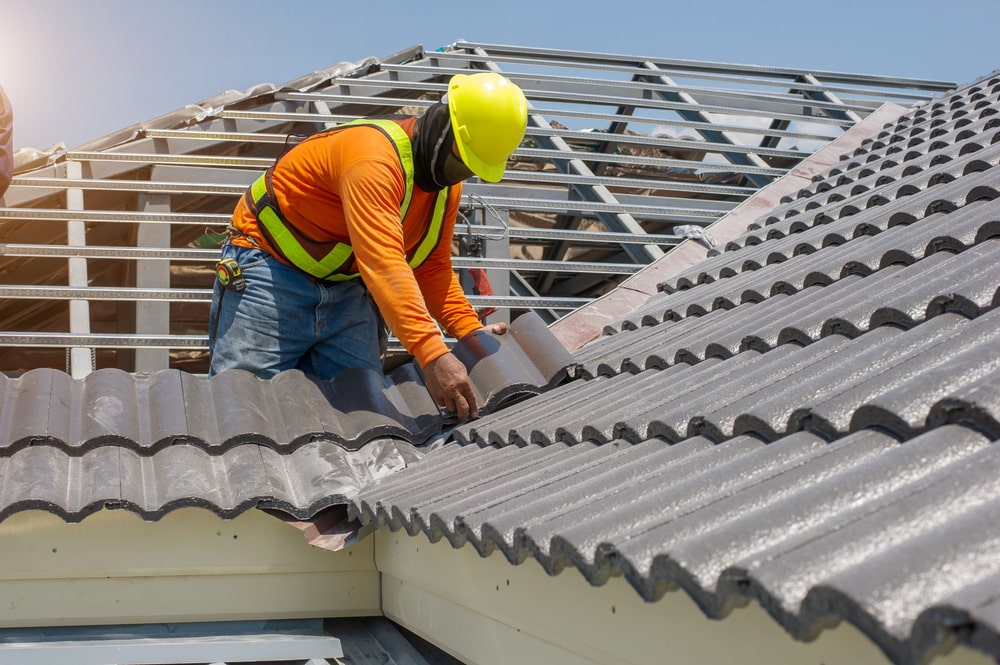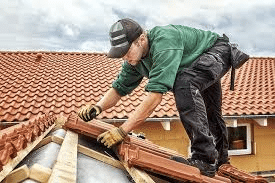A Comprehensive Guide to Effective Roof Apartment Roofing Installation
The intricacies of level roof covering installment demand a thorough strategy, beginning with a thorough understanding of different flat roof kinds and the vital materials required for optimum performance. An effective setup hinges not just on the option of materials yet likewise on the preparation and implementation of each step entailed in the process.
Recognizing Flat Roofing Types
When considering flat roofing systems, it is crucial to recognize the various kinds available, as each offers distinctive advantages and negative aspects tailored to details requirements. One of the most typical types of level roof coverings consist of Built-Up Roof covering (BUR), Customized Asphalt, and Single-Ply membrane layers.
Built-Up Roofing includes multiple layers of asphalt and gravel, giving outstanding longevity and weather condition resistance. It is specifically advantageous in locations vulnerable to severe climate condition however might call for even more maintenance as a result of its intricate construction.
Customized Asphalt is a prominent selection for its ease of setup and versatility. It often employs a torch-applied or self-adhesive method, which can be beneficial for quick repair services and lasting performance. Nevertheless, its life-span can be shorter compared to BUR.
Single-Ply membrane layers, including Thermoplastic Olefin (TPO) and Ethylene Propylene Diene Monomer (EPDM), are acknowledged for their lightweight nature and power performance. These products are often chosen for business buildings due to their cost-effectiveness and simplicity of setup (Cleveland Roofing Specialists). Nevertheless, they may not offer the exact same level of insulation as various other options.
Each roofing kind requires careful consideration based upon climate, spending plan, and details job needs.
Necessary Materials for Apartment Roofing
A selection of crucial products are critical for the effective setup of level roof covering systems. The option of materials directly influences durability, performance, and overall effectiveness.
One of the primary products is the roof covering membrane, which can be created from numerous compounds such as thermoplastic polyolefin (TPO), ethylene propylene diene monomer (EPDM), or PVC. Each kind offers one-of-a-kind advantages, including UV resistance and adaptability, which are essential for prolonged efficiency.
In addition to the membrane, insulation products play a significant role in power performance. Stiff foam boards or polyisocyanurate insulation are popular selections, as they give superb thermal resistance and dampness management.
Additionally, roofing adhesives and sealants are essential for guaranteeing a watertight installment. These products have to work with the selected membrane layer to avoid deterioration with time.
Getting Ready For Setup
Proper preparation is essential for an effective flat roof covering setup, as it prepares for a sturdy and efficient roofing system. Begin by performing a complete examination of the existing roofing system structure. Search for indicators of damages, including leaks, rot, or inadequate drain, which can jeopardize the brand-new roof. Make certain that the underlying products are audio and can support the weight of the brand-new roofing elements.
Following, collect all essential devices and products, making sure that they satisfy market standards. This consists of water resistant membranes, insulation, flashing, and bolts. Acquaint on your own with the manufacturer's specs, as adherence click for info to these standards is vital for service warranty functions.
Take into consideration weather condition problems; prevent setup throughout heavy rainfall or severe temperatures, which can impact product efficiency. By taking these primary steps, you can boost the possibility of a successful level roofing installation that fulfills both visual and structural needs.
Step-by-Step Installment Process
With the groundwork developed through thorough prep work, the following stage entails implementing the flat roof covering setup systematically. Begin by ensuring that the structural deck is free and tidy from particles. Next off, set up a vapor barrier to avoid wetness buildup underneath the roofing material. This step is crucial for preserving the roof's stability gradually.
Complying with the vapor obstacle installment, lay down insulation boards, ensuring they fit securely with each other to minimize thermal connecting. Safeguard the insulation with ideal bolts based upon the roofing kind and local building codes. When the insulation remains in location, it's time to use the roofing membrane. Depending upon the picked product-- such as TPO, EPDM, or changed bitumen-- install the membrane according to the maker's requirements.
Make sure correct overlap at sides and joints to develop a water tight seal. Use adhesives, mechanical fasteners, or warmth welding as required. Lastly, set up flashing around boundaries, vents, and any kind of roof penetrations to enhance waterproofing. After installation, conduct a comprehensive assessment to determine any type of possible issues before wrapping up the job, making sure a dependable and robust flat roof system.
Maintenance Tips for Long Life
Routine maintenance is necessary to guarantee the longevity and performance of a flat roofing. Among the main tasks is to perform regular examinations a minimum of twice a year, preferably in springtime and autumn. Throughout these evaluations, seek indications of wear, such as sores, fractures, or merging water, which can suggest underlying issues.

Making certain correct water drainage is essential to stop water accumulation. Inspect and clear gutters, downspouts, and scuppers to assure unhampered water flow. Furthermore, evaluate seals around vents, skylights, and various other infiltrations for any kind of signs of wear and tear, using caulk or this website sealer as needed to maintain a leak-proof barrier.
Finally, consider expert upkeep services every few years for extensive examinations and repairs. By sticking to these upkeep pointers, you can considerably expand the life of your flat roof, guaranteeing it remains a reputable shield versus the elements.
Final Thought
Efficient flat roofing installment requires a methodical technique encompassing detailed examinations, product option, and thorough prep work. Following the described steps during the installation process makes certain the proper application of roof membranes and insulation while enhancing waterproofing via effective blinking installment. Furthermore, implementing regular upkeep practices significantly adds to the durability of the roof. By adhering to these standards, a trustworthy and resilient level roofing option can be accomplished, efficient in withstanding numerous environmental conditions.
The ins and outs of flat roofing system installment need a thorough approach, beginning with a thorough understanding of different level roof kinds and Recommended Site the vital materials required for optimum performance.Appropriate prep work is important for a successful level roof setup, as it lays the foundation for a effective and durable roofing system. After installment, conduct an extensive inspection to determine any type of potential issues before ending the project, making certain a trusted and durable flat roof covering system.
